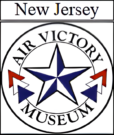Our A-7B Corsair II Bu No. 154550
The Chance Vought A-7 series of aircraft were designed to replace the Douglas A-4E Skyhawk in Navy service as a carrier-borne attack aircraft. In May 1963, the Navy began a design competition for a light-attack, carrier-based aircraft. The new aircraft was to carry a larger ordnance payload than the Skyhawk and fly a greater combat radius. Vought, Douglas, Grumman, and North American responded to the Navy’s invitation to bid.
History

- The A-7 on display was built in Dallas TX in 1969
- 05/01/69 Lemoore NAS VA112 Flying Eagles
- 05/12/69 Lemoore NAS VA93 Blue Blazers
- 05/21/70 USS Midway VA93 Blue Blazers
- 07/30/70 USS Roosevelt VA87 Golden Warriors
- 01/12/71 Cecil Field NAS VA174 Hell Razors
- 09/11/72 Cecil Field NAS VA87
- 11/15/73 Cecil Field NAS VA46 Clansmen
- 12/04/74 USS Kennedy VA46 Clansmen
- 04/29/76 Cecil Field NAS VA46 Clansmen
- 08/16/77 Jacksonville NAS VA203 Blue Dolphins
- 04-10-78 Alameda NAS VA303 Golden Hawks
- 02/02/83 Jacksonville NAS VA303 Golden Hawks
- 09/26/83 Point Mugu NAS VA305 Lobos
- 12/26/87 Lakehurst NAS NATTC
- 12/27/87 Retired
The A-7 is a modern, sophisticated highly versatile airborne weapon system capable of performing a variety of search, surveillance and attack missions. Often called the SLUF (short little ugly fella), it was called many other names, but beautiful isn’t one of them. It is capable of carrying four external wing-mounted 300 gallon fuel tanks, coupled with a variety of ordnance on remaining stations. The A-7 can also conduct in-flight refueling operations and is capable of transferring over 12,000 pounds of fuel. The A-7 has a fully integrated digital navigation/weapon delivery system. Vought was selected as the winner in February 1964.
The proposal by Vought engineers was based on their F-8 Crusader but with many significant differences. By using a proven design and engine, development of the A-7 was greatly accelerated over what it would have been if both airframe and power plant were entirely new concepts. Compared with the F-8, the A-7A had a shorter fuselage with less sweepback on the wing, and without the F-8 Crusaders adjustable wing incidence. Outboard ailerons were introduced on the A-7 wing, and the structure was strengthened to allow the wings and fuselage to carry a total ordnance load of 15,000 lbs on eight stations (two fuselage each with 500 lb capacity, two inboard on the wings with 2,500 lb capacity each, and four on the outer wings with 3,500 lb capacity each) for more than 200 combinations of different stores. The A-7A incorporated the 11,350 lb thrust Pratt & Whitney TF30-P-6 turbo-fan engine which had been developed for the F-111. The engine for the A-7, however, was not to have an after-burner.
That the lineage of the A-7 can be traced directly to the Vought F-8 Crusader fighter is obvious. Like the F-8, the configuration of the A-7 is characterized by a high wing, low horizontal tail, chin inlet, and short landing gear legs that retract into the fuselage. Since the A-7 is a subsonic aircraft, however, no area ruling is incorporated in the fuselage, which is also shorter and deeper than that of the supersonic F-8. Because of the larger mass flow of the turbofan engine employed in the A-7, the size of the chin inlet is somewhat larger than that of the turbojet-powered F-8. These differences make the A-7 appear shorter and more stubby than the earlier fighter.
The A-7A began Vietnam combat operations in December 1967, and proved to be one of the most effective Navy close support and strike aircraft in that conflict. A-7E Corsair IIs were part of the two-carrier battle group that conducted a joint strike on selected Libyan terrorist-related targets in 1986. Together with carrier-based F/A-18s, A-7s used anti-radiation missiles to neutralize Libyan air defenses during the raids. In Desert Storm, the A-7 demonstrated over 95% operational readiness and did not miss a single combat sortie.
